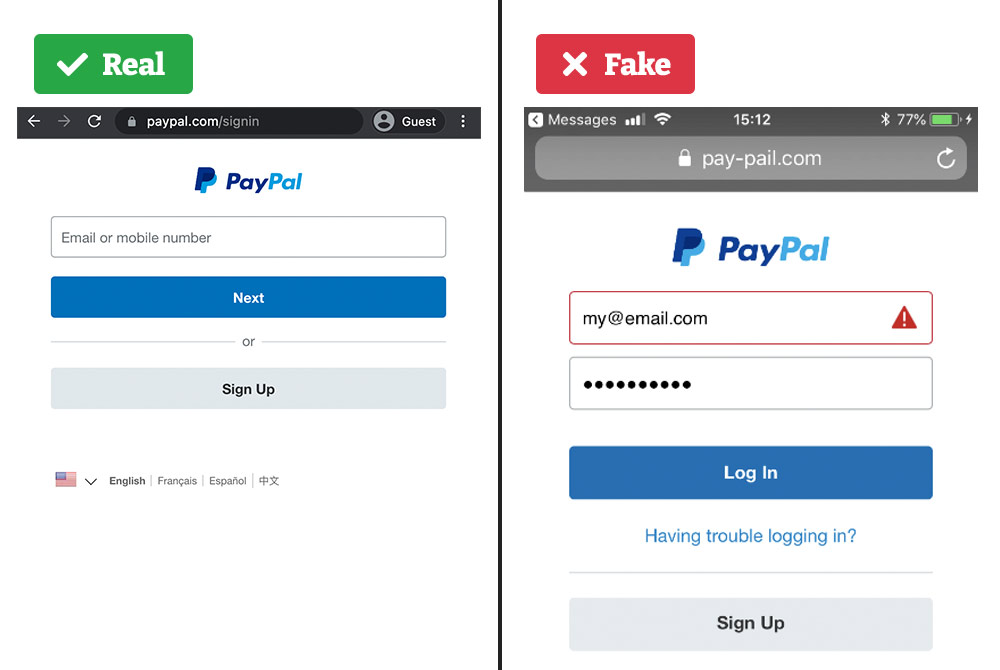Instruction: Can you spot three fake websites and compare the three fake websites to three real websites, plus showcase what makes the fake websites fake?
Response: The three fake website examples I have chosen were identifiable based on: verification (green verified company), security (HTTPS vs HTTP) protocols and misspelling in URL. Example one, I could identify it was fake based on verification, this is not always the case in a single instance but when comparing two domains with same address it is highly likely that the one not verified is fake/untrustworthy. We can identify it to be verified on the left of the search bar in green text “verified company” done by a third party (see image one). Example two, I could identify it was fake based on security protocol, like the previous it is not always the case but it is more trusted to visit the HTTPS site vs the HTTP site for duplicate URL address/domain. HTTPS is hyper text transfer protocol secure known for being on port 443 and provides security vs HTTP residing at port 80 known for not having any security measures in mind (see image two). Lastly, example three, a website can be deemed fake/fraudulent based on a misspelling in the URL/domain address. Actors who host malicious websites will do anything to make a site look legitimate but will sometimes give away their malicious purpose with a simple misspell. The known online payment method paypal hosted at paypal.com is deemed legit whereas a site trying to look like the legit site but has a typo “pay-pail” gives away that it is indeed a replica, fake and fraudulent (see image three).

Image One

Image Two

Image Three

Leave a Reply